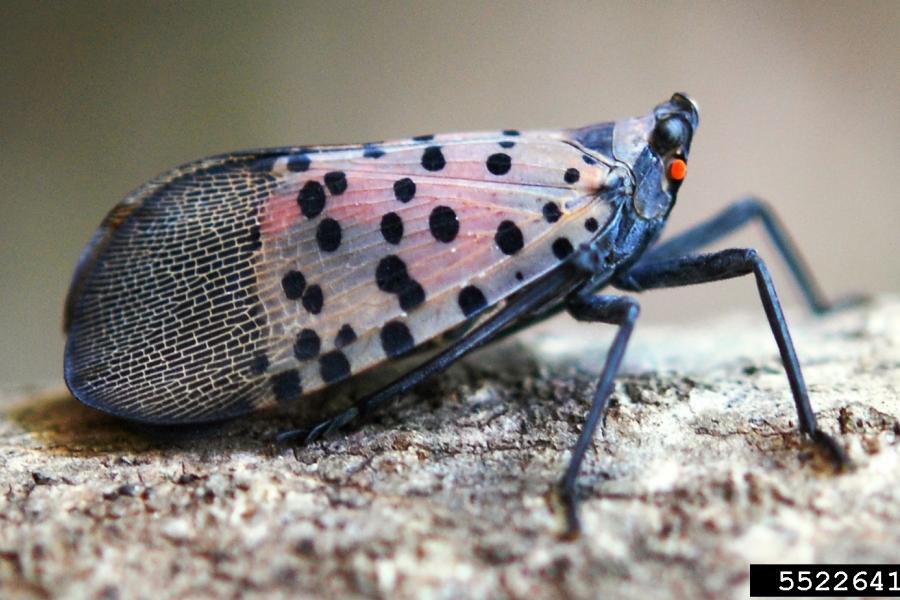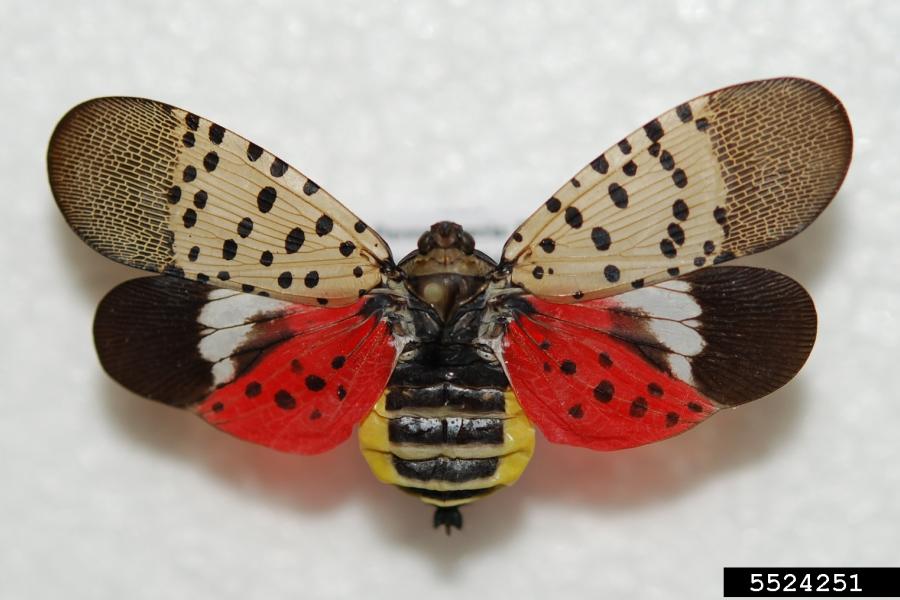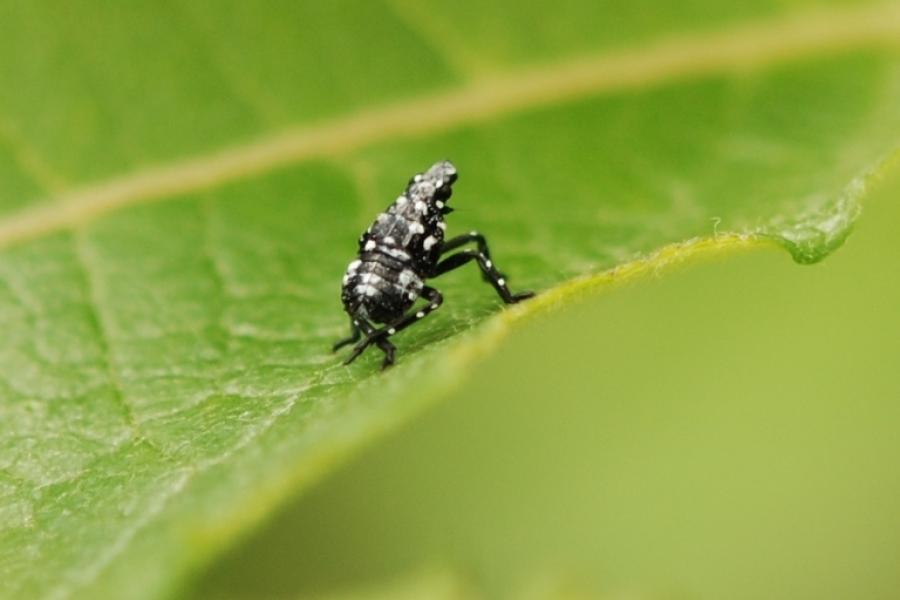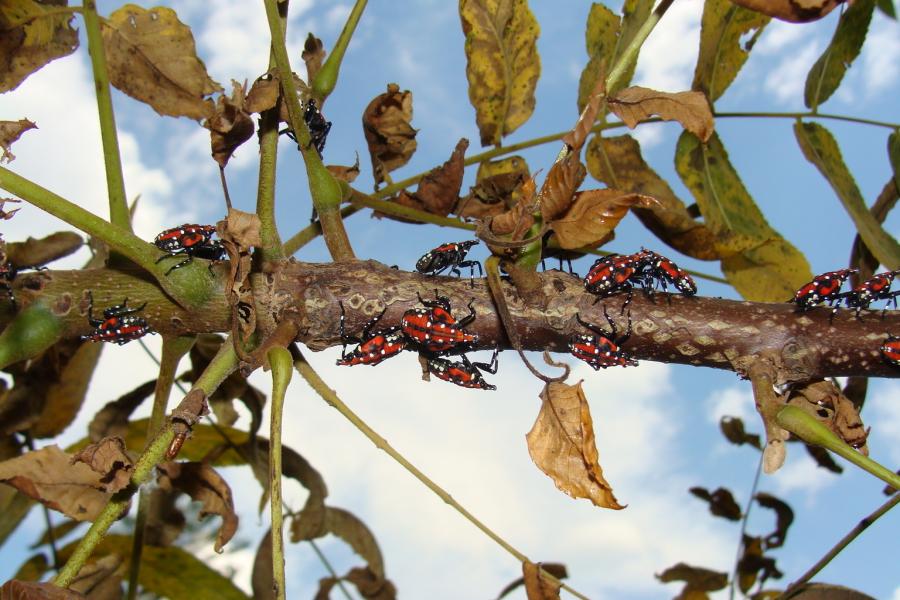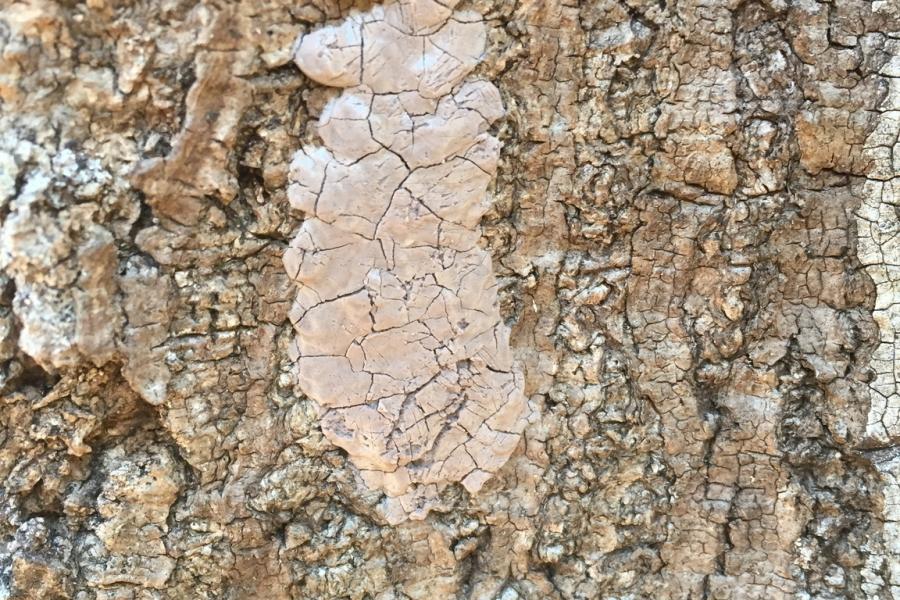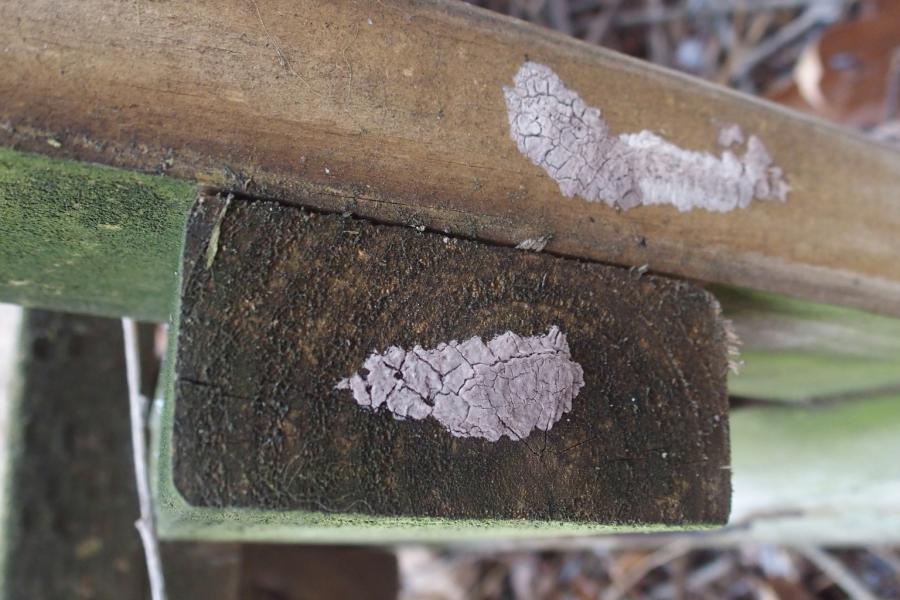Why you should care
Spotted Lanternfly (SLF) is a sap-feeding insect that has caused significant impacts to vineyards, orchards, and other agricultural commodities in states where it has become established. SLF not only harms grapevines, maples, hops, blueberries, and over 100 other host plants, but has been observed to impact outdoor recreation in other states where populations are high and adult lanternflies swarm in large numbers during mating season.
Where is SLF Found?
Spotted lanternfly was first discovered in Berks County, Pennsylvania in September of 2014. It is thought to have arrived on a stone shipment around 2012. It has since spread to 26 counties in Pennsylvania and is under a quarantine in that state.
Since then, spotted lanternfly infestations have also been found in several states, including Massachusetts, Connecticut, Delaware, Maryland, New Jersey, New York, Virginia, and West Virginia and Ohio (view map).
There is no indication that this pest is established in Vermont. It is important to be on the lookout for this invasive insect to prevent it from becoming established in the state.
All phases of this insect are strong hitchhikers and can easily be moved long distances through human assisted movement on vehicles and other items. The adults also will lay eggs on any surface and is a primary way that the pest is spread to new location so look for irregular masses that look like dried mud.
Where should I make a report?
If any indication of SLF is found, residents should take a photo and note the location of the insect. If possible, collect the specimen. Report any potential sightings of the pest using our VTinvasives online reporting form. Residents should look for large, gray insects, about one inch long, with black spots and red underwings, or inch-long, rectangular yellowish-brown egg masses covered with a gray waxy coating. Egg masses may be found on any flat surface. See slideshow of images below.
Learn more about SLF
-
Spotted Lanternfly Look-alikes (New York)
-
Spotted Lanternfly Look-alikes (Massachusetts)
Photo credits: Lawrence Barringer, Pennsylvania Department of Agriculture, Bugwood.org

